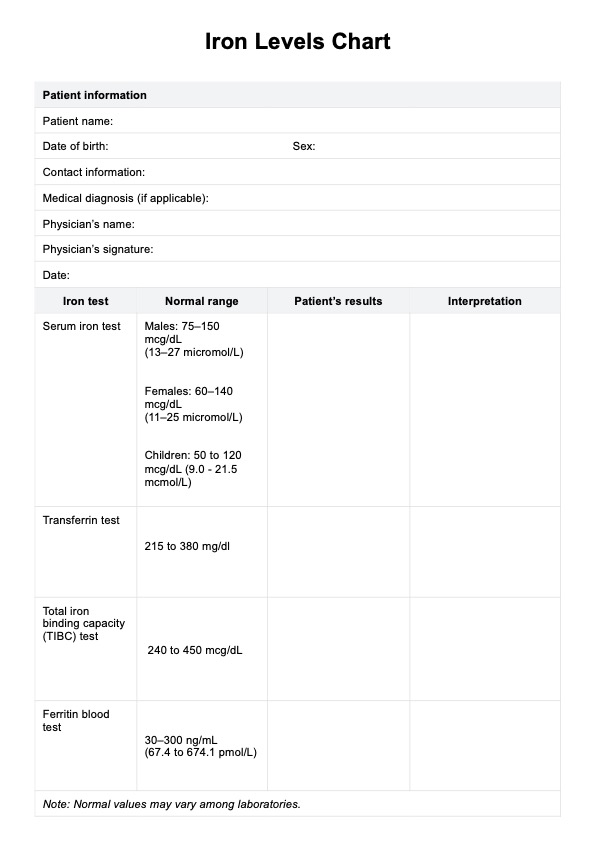Primary care doctors, hematologists, gastroenterologists, and cardiologists will likely request an Iron Levels Chart.

Iron Levels Chart
Keep an Iron Levels Chart readily available for interpreting and analyzing your patient’s iron levels. Access a free template by clicking here.
Use Template
Iron Levels Chart Template
Commonly asked questions
Iron level charts are used when the referring physician must analyze, interpret, and monitor the patient's iron levels.
The iron level charts are mainly used as a document where the referring physician can write down their observations and findings based on the analysis and interpretations they made.
EHR and practice management software
Get started for free
*No credit card required
Free
$0/usd
Unlimited clients
Telehealth
1GB of storage
Client portal text
Automated billing and online payments











